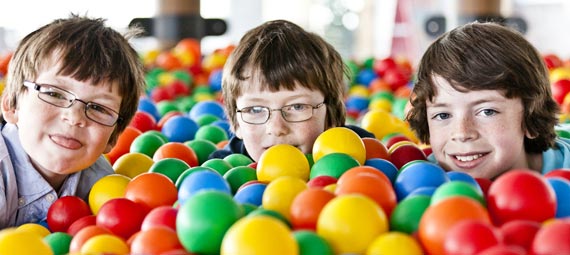Sensory Toys for Children: Top Products for Kids to Include in Your Toolbox
There are countless at-home speech therapy techniques that you can do with your child to encourage his progress. You may have already invested in educational toys and games to serve as tools for speech therapy lessons, such as flashcards for target sounds or Speech Buddies for articulation practice. As well, consider the use of sensory toys for children.
As your baby grows, he learns about the world around him with various senses. Using a multisensory approach to speech therapy can not only improve knowledge retention, but it may also boost your child’s motivation, according to Tatyana Elleseff, M.A. CCC-SLP. Sensory toys for children may also be used as prompts to encourage vocalization. The child may be asked to describe the feel of a fuzzy tennis ball, for example, or the scent of a cookie. Consult your child’s speech-language pathologist (SLP) for advice on using a multisensory approach to at-home speech therapy techniques. This is particularly critical if your child has sensory processing disorder (SPD). This is a neurological disorder that disrupts the way in which a person processes information. Over-stimulating a child with SPD can result in an adverse reaction.
Auditory
Auditory stimulation is essential for speech and language development. In your sensory toy toolbox, include a device that will allow your child to record his own voice and play it back (i.e. recorder, toy microphone, karaoke toy). CDs that have sound effects and nature sounds can also be fun for a child. You could ask your child to speculate what kind of animal made a particular sound, for example. Sing-along CDs are also helpful for encouraging vocalization. Sensory toys for children can also include cymbals, whistles, and other noisemakers.
http://www.youtube.com/watch?v=v-0LE5sm_cA
Tactile
If your child has an articulation disorder, engaging his tactile sense is an effective method of helping him to conquer those issues. Try placing a Speech Buddy in his mouth (use the appropriate Speech Buddy for the target sound that your child needs help with). The device provides a target so that he knows where to place his tongue for a particular sound.
As well, look around your house for objects that might offer an interesting texture. I mentioned a fuzzy tennis ball already, but you can also introduce modeling clay, sand, textured fabric, Velcro, crushed cornflakes, or whatever you happen to have on hand that offers various tactile experiences. Additionally, remember that various temperatures also engage the tactile sense. As you introduce an object to your child, ask him to describe the texture, the shape, the color, etc. He could speculate on what it might be used for or even create a story about the object.
Gustatory
Engaging the sense of taste can be a fun way to keep your youngster engaged in his speech therapy lesson. Just remember that if he has SPD, consult his speech therapist or other medical professional before introducing a food or liquid that might produce an adverse reaction.
Set up a mini tasting party. Dip a sterile cotton swab or a Toothette into lemon juice, soy sauce, sugar, salt, vanilla extract, other extracts, and any other tastes that you wish to introduce to your child. If your child responds well to a particular taste, try introducing him to a food with that taste. You might squeeze a slice of lemon into a small glass of water, for example, if he responds well to the lemon juice.
Gustatory stimulation can lend itself to speech therapy when you turn it into a skill-building exercise. For example, for your tasting party, encourage your daughter or son to invite dolls, stuffed animals, G.I. Joe figures, etc. to the party. Your child can practice conversation skills by offering tastes to the stuffed animals and then discussing whether the tastes are pleasant or not.
Olfactory
Sensory toys for children should include objects that stimulate the sense of smell. Present scents with your child’s mouth closed. Begin with familiar scents, such as the brand of soap your family always uses, your perfume, etc. Have your child close his eyes and ask him to identify the scent. Prompt him to vocalize by asking which room in the house he might smell the scent, whether he associates the scent with a particular person, etc. Progress to other scents such as essential oils or food scents and ask your youngster to speculate about them. Avoid presenting too many new scents at once; you don’t want to overwhelm your child.
Visual
Combine speech therapy techniques with visual cues. A study from Purdue University found that children with speech delays were able to improve intelligibility and build their vocabularies when stimulated with visual cues in combination with other speech therapy techniques.
Use gestures or sign language to prompt vocalizations. If your child struggles with the word “milk,” for example, enunciate the word clearly several times while raising your hand to mimic drinking. As well, point to your mouth while you pronounce a target sound or word so that your child can see how your lips move. When you do flashcard drills with your child, use cards that have relevant pictures to help prompt vocalizations.




A Great blog with video all about sensory toys and what the benefits are and why you should consider getting them for you children, whether they are young or have learning difficulties!